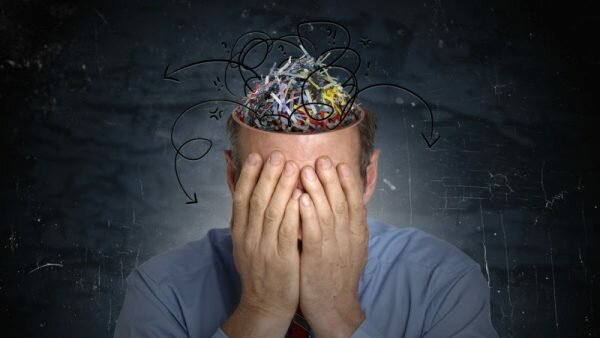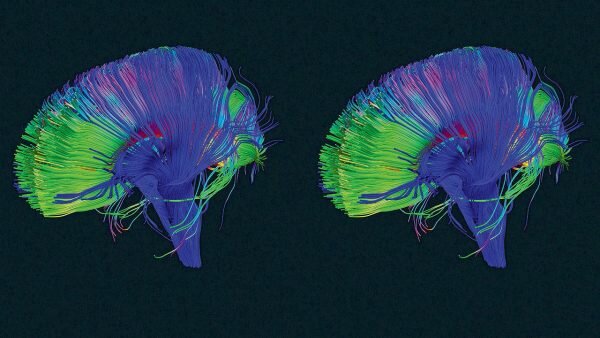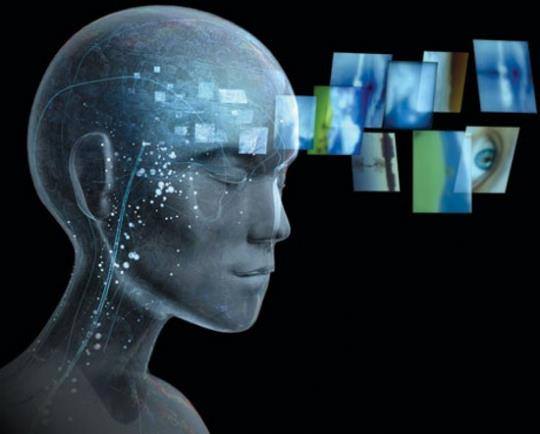Your Brain Has A ‘Delete Button’ And Here’s How To Use It!
By: lifecoachcode
There’s an old saying in neuroscience: “neurons that fire together wire together.”
This means the more you run a neuro-circuit in your brain, the stronger that circuit becomes. This is why, to quote another old saw, “practice makes perfect”. The more you practice piano, or speaking a language, or juggling, the stronger those circuits get.
Scientists have known this for years. However, nowadays researchers learn another part of the truth: In order to learn something, even more important than practicing is the ability to unlearn, or to break down the old neural connections. This is called “synaptic pruning”.
THIS IS HOW IT WORKS:

Imagine your brain is a garden, except instead of growing flowers, fruits, and vegetables, you grow synaptic connections between neurons. These are the connections that neurotransmitters like dopamine, seratonin, and others travel across.
“Glial cells” are the gardeners of your brain—they act to speed up signals between certain neurons. But other glial cells are the waste removers, pulling up weeds, killing pests, raking up dead leaves. Your brain’s pruning gardeners are called “microglial cells.” They prune your synaptic connections. The question is, how do they know which ones to prune?
Researchers are just starting to unravel this mystery, but what they do know is the synaptic connections that get used less get marked by a protein, C1q (as well as others). When the microglial cells detect that mark, they bond to the protein and destroy—or prune—the synapse.
This is how your brain makes the physical space for you to build new and stronger connections so you can learn more.
THIS IS WHY SLEEP MATTERS:

Have you ever felt like your brain is full, usually when you learn something new, or start a new job or a hobby? Well, it may just be.
When you learn lots of new things, your brain builds connections, but they’re inefficient, ad hoc connections. Your brain needs to prune a lot of those connections away and build more streamlined, efficient pathways. It does that when we sleep.
When you sleep your brain cells shrink by up to 60% to create space for your glial gardeners to come in and take away the waste. That’s how they prune the synapses.
Have you ever woken up from a good night’s rest and been able to think clearly and quickly? That’s why. It’s like running fragmentation on your computer.
This is the same reason naps are so beneficial to your cognitive abilities. A 10 or 20 minute nap gives your microglial gardeners the chance to come in, clear away some unused connections, and leave space to grow new ones.
Thinking with a sleep-deprived brain is like hacking your way through a dense jungle with a machete. It’s overgrown, slow-going, exhausting.
Thinking on a well-rested brain is like wandering happily through Central Park; the paths are clear and connect to one another at distinct spots, the trees are in place, you can see far ahead of you. It’s invigorating.
THIS IS HOW YOU CAN CONTROL WHAT GETS DELETED FROM YOUR BRAIN:

It’s the synaptic connections you don’t use that get marked for recycling. The ones you do use are the ones that get watered and oxygenated. So be mindful of what you’re thinking about.
If you spend too much time reading theories about the end of “Game of Thrones” and very little on your job, guess which synapses are going to get marked for recycling?
If you’re in a fight with someone at work and devote your time to thinking about how to get even with them, and not about that big project, you’re going to wind up a synaptic superstar at revenge plots but a poor innovator.
What you focus on prevails! You literally craft your own mind by choosing what you pay attention towards.
Of course, you can hardly control what happens to you throughout your day, but you can control how much it affects you. To be more specific, you can choose WHAT affects you and construct your own neural connections.
Instead of focusing on things that hold you back, focus on things that make you a better human being. Instead of imagining scenarios that will most likely never happen, meditate. Clear your mind. Bring your mind to the now and use your mental energy toward things that benefit you.
It really is a game of strategy. You need to smartly use your mind, to be smart. Resisting the temptation of things that don’t benefit you, that’s what makes you smart.
In order to delete something, simply, stop thinking about it. Even when you are reminded, change your focus and attention. Sooner or later it will get marked for recycling.
Sources: http://www.fastcompany.com; Judah Pollack is the co-author of The Chaos Imperative, and Olivia Fox Cabane is the author of The Charisma Myth;
Disclaimer: We at Prepare for Change (PFC) bring you information that is not offered by the mainstream news, and therefore may seem controversial. The opinions, views, statements, and/or information we present are not necessarily promoted, endorsed, espoused, or agreed to by Prepare for Change, its leadership Council, members, those who work with PFC, or those who read its content. However, they are hopefully provocative. Please use discernment! Use logical thinking, your own intuition and your own connection with Source, Spirit and Natural Laws to help you determine what is true and what is not. By sharing information and seeding dialogue, it is our goal to raise consciousness and awareness of higher truths to free us from enslavement of the matrix in this material realm.
 EN
EN FR
FR



























I am working on DNRS, Dynamic Neural Retraining System–a program by Annie Hopper to help rewire the brain when suffering from MCS, fibromyalgia, fatigue, PTSD and other chronic issues (retrainingthebrain.com). Everything in this article fits right in with what the program teaches and they are having great success. I have shared the article with several other peopel in the program–thanks for the great information on Glial Gardeners!
It all seems confusing or complicated
For those who are a little skeptical about this, I can highly recommend Dr. Frances E. Jensen’s book ‘The Teenage Brain’ which is research-based and talks of the same processes mentioned above – particularly in how they relate to development of the teenage brain .
I am just wondering if this is pure NLP speak? Sounds great but appears to me to deal with things on a superficial level. What about PTS – flashbacks? Memory is very powerful – the Amygdala is our primal survival tool….I don’t think telling people to just not think about things deals in an holistic way with the psyche.
“Neuroscience” from “lifecoach.” Please. Get real experts on this topic.
I wouldn’t call the button “delete”, it is rather “bring deeper away” button. In your system of images – the bush that has been cut in your garden were not burned, but put in a fare and dark corner instead, so that it doesn’t disturb you on daily basis. We can recall very old memories, even from prenatal time, so the experience doesn’t disappear anywhere, it just goes somewhere deeper into subconscious space. Sometimes conscious mind covers some of the most terrible memories from us for decades, but then they start somehow influence our actions and finally pop up unexpectedly, with no attempt from our side to start to think about them again. There is no real “delete for good” button in our brain. Or maybe the mechanism that the author mentions works physically exactly in the brain, in the space of counsciousness, so it can be impacted by conscious actions and focusing of our thoughts, but there is more of memory in our body than that – it is everywhere in our body, in muscles and organs, as well?
I’m not convinced, the process of deletion can’t actually happen imo. I keep meeting people who remind me of long forgotten things and then my brain brings out more detail as I reconnect mentally with my past thoughts. Isn’t it possible that the older synapses have information which is stored by some other method which can be recalled later and can rebuild the synaptic connections which were previously destroyed and hence bring the forgotten memory back to mind? Also, how might the brain differentiate between conscious and sub-conscious synapses as regard this pruning process? The mind boggles! 😉
Things can always be brought back to mind. What the article describes is a reduction in the frequency of the use of specific synaptic connections, putting those connections on the ‘back burner’ as it were and reducing their strength through reduced usage. Hypnosis can be used to create new synapses and thereby reduce the attraction to use paths that we would choose to discard. I understand this concept well and used it to quit smoking by changing my thinking more than 25 years ago. Think of the subconscious mind as an information manager who determines where information will be stored and how it will be prioritized. By directing your subconscious to give a higher priority to a new line of thought you can minimize the use of old pathways, and thereby degrade their viability. The brain is much more plastic than had been thought just a few years ago. Frequency of use equates to synaptic strength. You are what you eat.. so to speak.
Human beings do one thing better than any other species. We learn things. We learn through a variety of stimulus. We read. we hear, we see, we feel, we think we even learn from forming sentences and then speaking them and hearing our own voice making a statement. Each form of learning creates it’s own pathway to it’s own part of the brain, so if you want to learn something thoroughly, do it in a variety of ways ie: read it, speak it, listen to it, type it, write it out long hand, and you will create five paths to the same info. Things learned in this way will always be easily accessible… truly learned knowledge. Try it and see what you think.
Well-stated Jim, I like that analysis and explanation. It seems very logical to me. Thanks for that insightful contribution. Yes, we are what we eat (and think).
I’ve always known my brain had a delete button. Trouble is some bugger is always pressing it!
Seems like a great argument AGAINST psychotherapy.
This is exactly the type of work I have done in psychotherapy, working towards what serves me in life and letting go what doesn’t. Therapy is not about complaining about ones life.
Me too. I’m trying, with my therapist, to rewire my brain. Like you, working on new responses to stress and avoid what has been my lifelong default reactions.
Yes, therapy is not about complaining about ones life. It´s a place for grown. And hard work.
Agreed!
Person who asked “what about when we dream?” ; I hear dreams are a mental processing type thing. (Doesn’t always make the final sleep cycle pleasant of course, especially when it’s as tedious as real life), but it’s basically just the mind’s way of pooping out mental junk.
On a tangent, have you ever become aware that you’re dreaming, WHILE you’re dreaming? Look up lucid dreaming, you can learn to do that on demand with practise, and essentially start forming links between your conscious and sub-conscious mind… completely amazing stuff… gets a whole lot more interesting from there too 😉
Pure wisdom
What about when you dream? There are a set of situations I barely think about while awake & when I do I know they are unhelpful & I gently move to a more positive, constructive state of mind. However, when I am asleep my dreams are often based on these events. I can not consciously control them yet I know the neural pathways are being kept strong because of the repetition involved.
Any thoughts?
Dreaming is a mechanism of release of stress. You can’t compare dreaming with mental rumination. Because dreaming is a spontaneous process, it’s not necessary to worry about the contents of your dreams and trying to control a natural process is always counterproductive.
The best approach would be to neutralize the stresses you have which are stored in your body — that will improve the baseline of your consciousness and will decrease both worrying and improve your quality of sleep. There is a scientifically validated technique that achieves this, called Transcendental Meditation.
What if you don’t dream or you don’t remember dreaming?
I would say, just be patient. The more you keep redirecting your conscious mind, it will mark those negatives for recycling. Eventually, your subconscious / sleeping mind won’t remind you of it so frequently either.
What about childhood memories you haven’t thought about for many years? Even a song can sometimes bring back long forgotten memories. Some things just stick with you for life.
If it’s as they say in this article, those memories must just not have that protein mark for signalling the glial cells to prune.
I bet childhood memories are harder to get rid of anyway, as you know less overall, and you can’t help those experiences having an influence over your subconscious. For some of us anyway, (having said that I know a lot of people (mostly males) who seem to remember almost nothing from their childhood)!
It is my belief that you should always remember and learn, as long as those memories aren’t plaguing and crippling your daily function. If it troubles you again, I’d say these methods are logically your best option.
I need to keep clearing away things which want to insert themselves between the itch and the scratch. 😉 — rb
IMMERSION
(presence)
The sparkling blue sea,
rippling shining waters,
roaming in winds so free,
enveloping my very being — me.
Oh Beloved, in such luxurious love —
I bathe in sapphires, emeralds, diamonds
in your opulent Being — be,
embracing all in beauty,
in love with me,
me with Thee.
ron bell
4-10-17
———-
THE OPAL SEA
by Ella Higginson
An inland sea – blue as a sapphire – set
Within a sparkling, emerald mountain chain
Where day and night fir-needles sift like rain
Thro’ the voluptuous air. The soft winds fret
The waves, and beat them wantonly to foam.
The golden distances across the sea
Are shot with rose and purple. Languorously
The silver seabirds in wide circles roam.
The sun drops slowly down the flaming West
And flings its rays across to set aglow
The islands rocking on the cool waves’ crest
And the great glistening domes of snow on snow.
And thro’ the mist the Olympics flash and float
Like opals linked around a beating throat.
===========================
“Each person is born
with an unencumbered spot,
free of expectation and regret,
free of ambition and embarrassment,
free of fear and worry; an umbilical spot
of grace where we were each first touched
by God. It is this spot of grace that issues peace.
Psychologists call this spot the Psyche,
Theologians call it the Soul,
Jung calls it the Seat of the Unconscious,
Hindu masters call it Atman, Buddhists call it Dharma,
Rilke calls it Inwardness,
Sufis call it Qalb, and Jesus calls it the Center of our Love.
To know this spot of Inwardness
is to know who we are,
not by surface markers of identity,
not by where we work
or what we wear or how we like to be
addressed, but by feeling our place
in relation to the Infinite and
by inhabiting it.
This is a hard lifelong task,
for the nature of becoming is
a constant filming over of where
we begin, while the nature of being
is a constant erosion of what is not essential.
Each of us lives in the midst
of this ongoing tension, growing
tarnished or covered over, only to
be worn back to that incorruptible
spot of grace at our core.
When the film is worn through,
we have moments of enlightenment,
moments of wholeness, moments of Satori
as the Zen sages term it, moments of clear living
when inner meets outer, moments of full integrity
of being, moments of complete Oneness.
And whether the film is a veil of culture,
of memory, of mental or religious training,
of trauma or sophistication, the removal of
that film and the restoration of that timeless
spot of grace is the goal of all therapy and education.
Regardless of subject matter,
this is the only thing worth teaching:
how to uncover that original center
and how to live there once
it is restored.
We call the filming over a deadening of heart, and
the process of return, whether
brought about through suffering or
love, is how we unlearn our way back to God.”
— Mark Nepo,
from ‘Unlearning Back to God’
——————————-
I appreciate the breadth of your response. I’m guessing you’re a teacher.
Very interesting but I’m sure my recycling bin is full ?
Oh. Someone went walking in the garden and saw all the prunes deleting the bike riders because almost no one thinks about riding a bike, right? But Somehow it’s exempt from this theory because we can ride a bike 20 or 30 years after having it “deleted”. I call bullshit. Someone is looking for a money door.
I agree
Whenever I have a thought that is not to my liking, I tap my forehead and say cancel. This works for me.
Thank you for a very interesting article. And for the physical part drink redox signaling molecules.
interesting, may be further study would be needed.
@Helena Hidalgo I think you have put your finger on a very essential point. Metaphors are useful to describe situations but don’t of themselves supply answers. Emotions are motivators – the terms are after all synonyms – and no one does anything intentional* without motivation. That stands to reason.
* I guess things like breathing and digestion are in some sense “done” without motivation thought even these functions can be affected by strong emotions.
Which wolf wins? The one you feed!
All you need is Attention, which is getting harder and harder to harness. Who is in control of the attention!? Please tell me!
Excellent article & explanation. Goes hand in hand with my belief system & teachings.
I wonder what the role of emotions in all these processes could be. They are the ones in charge of dwelling our attention into certain paths instead of others. So I think it shouldn’t be that easy erasing brain connections because the difficult part is to manage our attention, which ends up meaning managing our emotions.
A lot. Crucial. Definite
No need to call on funky spirit guides, who we don’t know WHO or WHAT they are?! Our loving heavenly Father gives us clear instructions to do exactly what this article also states in Romans Chapter 12 verse 2 in the Holy Bible. “be transformed by the ‘renewing’ of your mind. . ” so blessed. Thankyou for posting fascinating article. . I have SHARED for all my friends to be blessed too ❤ thankyou xx
Shirley – I couldn’t agree more. Dr. Caroline Leaf, a Christian Neuroscientist, says it over and over again in her books. “Switch on Your Brain” is a great one if you’re interested. 🙂
Shirley….. ummmmm. “No need to call on funky spirit guides, who we don’t know who or what they are” then continues to speak of God….
Hi Shirley, it is a wonderful thing to use the Holy Scriptures to verify what science reveals for in them is what science discovers hundreds of years later. All wisdom and truth come from Word of God and have time and again shown the avid reader/study of the Word that IT is far ahead of mankind’s thinking and knowledge. Another example of this is ISAIAH 40:22 “There is One who dwells above the circle of the earth, And its inhabitants are like grasshoppers. He is stretching out the heavens like a fine gauze,
And he spreads them out like a tent to dwell in.” Long before scientists were convinced the earth was flat the book of Isaiah describes the “circle of the earth”. I noticed a reply to your comment that refers to God as one of the “funky spirit guides”…..when in reality He is the Creator of all things. Here is another Scripture that covers one of the reasons for the existence of God’s Word….2 TIMOTHY 3:16 “All Scripture is inspired of God and beneficial for teaching, for reproving, for setting things straight, for disciplining in righteousness”. Be blessed in all things you do…..
I 2nd Jeff’s comment.
And I’m putting this to use tonight
Up until now many people think that those with little isolated post traumatic symptoms will get over it with time. “If post-traumatic stress symptoms continue past six months, mental health experts advise you to seek professional help for PTSD.” Must one suffer that long?
There is an organization called Prolympian International that has been showing success with people with various levels of post-traumatic stress symptoms including First Responders, such as Fire, Police, EMTs and for people in this article. Think about it…What do they do with their memories of these occurrences? When does one more memory become one to many? Some may feel uncomfortable talking about their symptoms out of fear of losing their jobs or appearing to have a mental health challenge. Right now there is no normal each person is doing what they can to just make it through each day. Help is available to rebuild yourself, get it.
To get coaching for your emotional/mental health symptoms, why not check us out: https://www.prolympianinternational.com/aff/rwprolympian106gmailcom_4
For organizations that want to join with us: https://www.prolympianinternational.com/aff/rwprolympian106gmailcom/signup
If you want to get training to help people in your community reduce their ptsd symptoms: https://www.prolympianinternational.com/aff/rwprolympian106gmailcom_2
Regina Wilson
That’s a clear article and a nice way to explain the function of the brain by using gardening as metaphor. Regarding the maintenance of that garden, we can ask our spiritual guides and guardian angel for assistance and also expose our brain to the scenery of a beautiful park or seashore and the elements. Feeling good is the best way to keep the gardener happy.
Besides, cranio-sacral therapy is a great way to balance the energy in the body, bring a sense of calm to the brain and the flow of the spinal fluids to and fro the brain, between the tail part of the spine and the head.
I need a lot of recycling